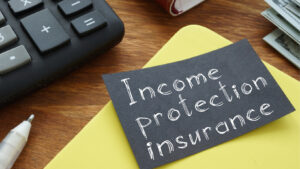Online banking is convenient, but it comes with a crucial responsibility: protecting your hard-earned money from the ever-changing online world. Many of us can perform complex financial transactions with just a few taps on our phones, often overlooking the complex security mechanisms and the vulnerabilities we inadvertently create. Cybercriminals are constantly developing new methods to bypass security and steal financial data, ranging from phishing attacks to malware.
This fact shouldn’t cause panic; it should keep you vigilant. Your first and best defense is acquiring relevant knowledge and developing positive security habits. In addition to basic guidelines, this guide offers practical, in-depth tips to help you seamlessly integrate these techniques into your digital life, protect your financial assets, and give you true peace of mind in the digital age.
Create and Manage Strong Passwords:
The security of your online banking depends on strong and unique passwords. Avoid outdated practices like adding numbers after common words: strong passwords should be long, complex, and unpredictable. Nowadays, it’s best to use a reliable password manager to create and store strong and unique passwords for all your online accounts, including bank accounts. This method is crucial because it effectively prevents credential stuffing attacks.
In a credential stuffing attack, hackers exploit a security vulnerability to obtain your password and then hack multiple websites, such as your bank account. The master password for your password manager should be a long passphrase: a series of words that you can remember but that a computer can’t guess. This measure, along with avoiding reusing passwords across websites, effectively protects your cybersecurity.
The Power of Multi-Factor Authentication:
Multi-factor authentication (MFA) acts as a security lock and significantly improves security after setting a strong password. MFA requires a second security factor to log in, such as SMS verification codes, authenticator apps, or biometrics (such as fingerprints or facial recognition). We recommend enabling this feature for your online banking and email accounts at your earliest convenience. Keep in mind that while SMS verification codes are better than nothing, they are vulnerable to SIM swapping attacks. Offline verification code generators like Google Authenticator or Authy offer the highest level of security. This multi-layered protection prevents cybercriminals from accessing your account without your device, effectively blocking their attacks.
Awareness of Phishing and Social Engineering Prevention:
Cyberattacks today often use deceptive tactics to trick victims into revealing their passwords. Phishing scams have evolved from clumsy emails to sophisticated messages masquerading as banks, utilities, and other reputable institutions. Their goal is to intimidate you and trick you into clicking malicious links or downloading infected attachments. To avoid becoming a victim, cultivate a high level of skepticism. Check the sender’s email address for spelling errors, hover your mouse over the link to view the URL before clicking, and remember that your bank will never send your password, PIN, or security code via email or text message. If in doubt, enter your bank’s official website URL in your browser or call the phone number on the back of your debit card to verify the information.
Digital Environment and Connection Security:
Personal security depends on your devices and network. Never use public Wi-Fi networks for online banking, as these networks are often poorly secured and easily exploited by criminals. Make sure to use a password-protected home network or mobile data. Additionally, update the security software on your computer, smartphone, and tablet, and configure your operating system and apps to update automatically. These updates typically address newly discovered security vulnerabilities that malicious actors seek to exploit. A reliable ad blocker can also prevent fraudulent (malicious) ads from loading on websites, minimizing the risk of an unintended virus infection.
Set Up Proactive Monitoring and Alerts:
Vigilance includes continuous financial monitoring and preventative measures. Most financial institutions offer customizable real-time SMS or email notifications to alert you to specific transactions. Set alerts for new device logins, transactions exceeding a certain amount, international transactions, and changes to contact information. This way, your bank becomes your proactive security partner, and you receive immediate notification when needed. Furthermore, you should carefully analyze your bank and credit card statements monthly. As an account holder, you must report all illegal activity to your bank to minimize potential losses.
Conclusion:
Securing digital banking requires continuous learning and cultivating vigilance. A defense-in-depth strategy includes the use of password managers, multi-factor authentication, phishing detection, device and network security, and account monitoring alerts. Even in the event of a breach in one layer of security, this multi-layered defense approach safeguards your financial assets. These proactive measures allow you to confidently and securely participate in the new financial world and use online banking services without worrying about the safety of your money. With these tips, you can stay in control of your financial security.
FAQs:
1. Are mobile banking apps safe?
Strong encryption and security measures guarantee the security of well-known mobile banking apps. To ensure security, download the app from the official app store and update your phone’s operating system.
2. Should I take immediate action if I believe I’ve fallen victim to a scam?
Please reach out to your bank’s fraud department promptly using the phone number on your debit card or through the bank’s website. Change your online banking password and be vigilant for other suspicious activity.
3. How do I create a strong password and remember it?
Avoid sharing personal information. Consider using a longer passphrase consisting of four or more random words (including uppercase and lowercase letters and symbols) (e.g., “Coffee Rainbow ~ Battery Staple!”).
4. Is my home Wi-Fi network secure?
It’s much more secure than public Wi-Fi, but you should use a strong router password and the latest WPA2 or WPA3 encryption to protect your home network.
5. Why is Multi-Factor Authentication (MFA) crucial?
MFA is an essential second layer of security. Even if a hacker steals your password, they can’t access your account without your physical device (used to obtain app verification codes) or fingerprint, preventing most account theft attempts.




